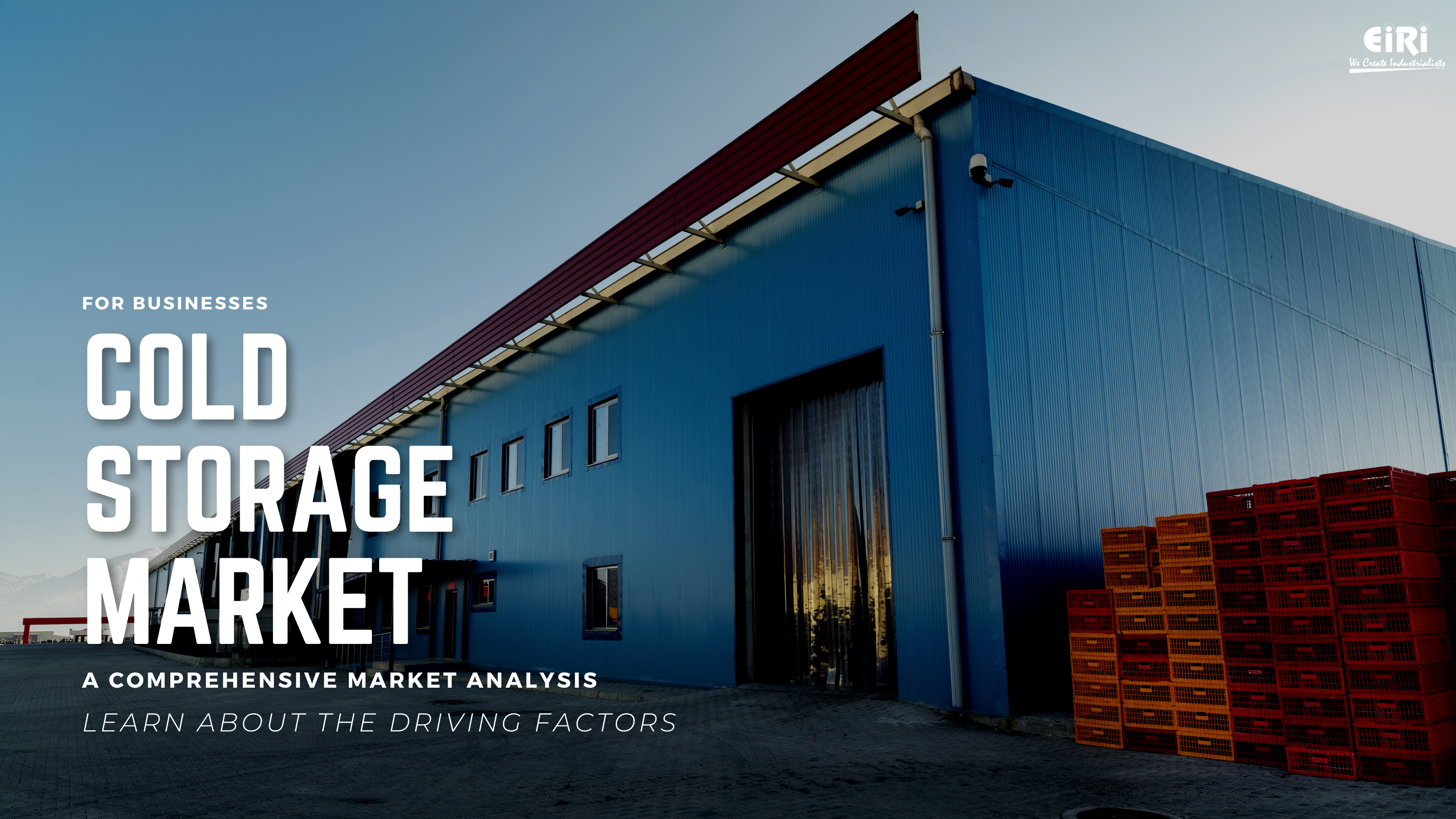Here’s Everything You Need to Know About the Cold Storage Market
Cold Storage — A Primer
The term cold storage may refer to a wide variety of storage locations that keep food at low temperatures, often as a means for extending its shelf-life. In the United States, the phrase is most commonly used to describe refrigerated warehouses that store perishable foods such as dairy products and eggs.
Food may be stored in climate-controlled warehouses or deep underground. The best known and most common type of cold storage facility is a refrigerated warehouse. Typically, the temperature is maintained between 35°F and 40°F (1.6°C to 4.4°C) year-round.
Cold Storage Market Size
The cold storage market, which constitutes refrigerated warehouses (cubic yards) and deep underground storage, has seen an increase in demand due to the increasing amount of packaged food and the need for storing renewable fuels like biodiesel and liquefied natural gas (LNG).
Global Cold Storage Market
- Market Size: USD 89.32 billion as of 2018
- Forecast: Expected to reach $218 billion by 2026
- CAGR: 11.71% during the forecast period.
Indian Cold Storage Market
- Market Size: INR 1425.49 billion as of 2020
- Forecast: Near about INR 3,000 billion by 2026
- CAGR: 14.6%
Understanding Market Based on Segmentation
1. Construction Type: Cold storage facilities are constructed to address the need for a specific segment that they are presumed to cater to. As such, the size and use of such facilities differ. Usually, cold storages are bulk storage characterized by the requirement to store large amounts of perishable food items. These include dairy products, meat, grains, fruits, and vegetables, among others. However, the construction type may differ according to the size of the storage. For example, cold storage at ports and airports may be smaller than one in a retail supermarket.
2. Utility Type: The need for cold storage should be determined according to the purpose for which it is built. The utility type should also be determined based on the size of the cold storage. To that end, Cold storage is often categorized as short-term (that allowing storage of up to six months) and long-term (that allowing storage periods of more than a year.)
3. Temperature Type: Cold storage facilities are designed to store specific food types or products. As such, the temperature of cold storage may be set to set to accommodate. For example, food with high acid content must be handled with care when stored in cold storage for longer times due to the risk of decay. The temperature type should be set according to the food that needs to be stored. That said, the temperature type may either be ambient or sub-zero storage.
Reviewing the Market Drivers
1. Significantly Optimized Value Chain Development: The cold storage sector is influenced by advancements in food production practices. The development of food preservation techniques has helped to eliminate seasonal limitations on fresh produce, reducing the time it would otherwise take to store produce. As a result, cold storage facilities are able to provide a greater volume of stored foods year-round.
2. Advancements in Inventory Management Post COVID: According to a 2020 supply chain analysis report by Capgemini, 68% of the manufacturers have had to adapt to the new business models. COVID-19 had certainly entailed a shift in how the inventory is preserved and sustained. In that sense, it both presents a challenge as well as an opportunity for business owners to take action.
3. Advances in Technology: Warehouse and supply chain automation courtesy of cloud computing and IoT have significantly revolutionized the cold storage sector. The cold storage industry has become fast-paced and technology-driven, leading to more precise forecasting, inventory management, and more effective logistics tracking.
4. Traditional Retail and eCommerce: The retail industry has continued to grow amidst the advent of eCommerce. Growing consumer demand for fresh food is helping the cold storage sector to stay relevant. The perishable goods are typically shipped to retail stores after arriving at the retail store; they are then stored in cold storage facilities.
5. International Trade Growth: The cold storage market has been rapidly expanding across the globe due to growing concerns about food safety and security. As well, the cold storage sector has provided an opportunity for manufacturers to store food in regions where the food may not have been stored before.
Conclusion
The cold storage sector has continued to grow steadily. The next few years will witness a significant upsurge in the cold storage market, with emerging markets leading the growth across the globe. The Indian Cold Storage Market is set to surpass a valuation of INR 3,000 billion by 2026, and that doesn’t come as a surprise.
What does intrigue is the fact that the market’s valuation will be attributed to emerging markets as well as durable sectors such as eCommerce and food supply chains — all of which have re-imagined themselves in the New Normal.
To know more about the Cold Storage market, reach out to us now.
Engineers India Research Institute (EIRI) is a leading market intelligence and consulting firm. We deliver syndicated research reports, custom research reports, and consulting services that are personalized and market-centric.




